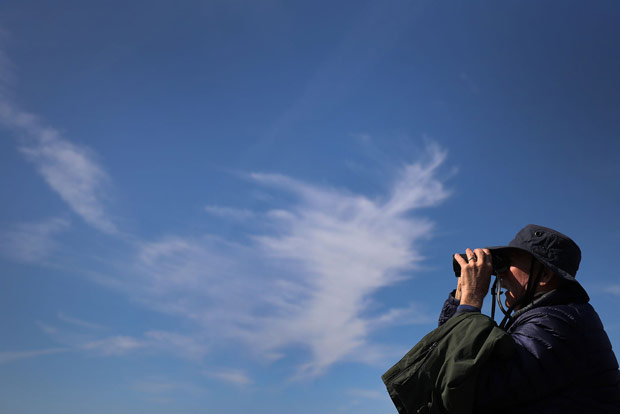Begin typing your search...
When planets align: Seeking solace in the darkness
We have now arrived at the longest, darkest night of the longest, darkest year. And yet rarely have the heavens so proclaimed their glory. Now comes one of the grandest events of the sky: a planetary conjunction.

Chennai
For the past year, Jupiter and Saturn have been dancing ever closer in the night sky.
On the evening of Dec. 21, the very nadir of winter, they will be so close — one-tenth of one angular degree — that if your eyes are as bad as mine, they will appear as one blurry, bright planet. With a little optical aid you should be able to discern them as separate orbs, almost kissing, although Jupiter will be 450 million miles in front of the ringed Saturn.
According to astronomers, the two planets have not appeared this close to each other in the sky since 1623 — but the sun’s glare then would have rendered them invisible. To find a conjunction that humans could see, you must skip all the way back to 1226, or ahead to March 15, 2080. You might wonder who will be around to witness that event. Every 20 years, Jupiter and Saturn come into conjunction — appearing within a couple of degrees from each other, about the width of three full moons.
Such conjunctions of planets are fraught with psychic meaning to astrologers.
And some astronomers have speculated that a conjunction involving Jupiter, Venus and the star Regulus in the years 2-3 BC might have inspired the stories of the star of Bethlehem. The universe is big enough that you can find almost any omen you want there. Yesterday more than 3,500 Americans died of Covid-19. As many may die today, and again tomorrow.
In the grand scheme of things, the universe is young. It was born in an eruption of energy 13.8 bn years ago. Its future, as far as we know, is endless, but everything interesting that will ever happen is happening now. This is the era of light, stars and galaxies; of creatures crawling around on dust motes, constructing telescopes and other intellectual pyramids, driven at least in part by wonder at the surroundings.
But in a few billion years the sun will engulf and destroy us. If the universe doesn’t collapse in a Big Crunch and disappear, dark energy could blow what remains permanently beyond the event horizon.
The universe will become too cold and dead even for thought, let alone life. None of us will be remembered.
Should we curse our fate, or be grateful we were here for the party?
On Dec 3 astronomers from the European Gaia spacecraft, which has been mapping and measuring more than a billion stars in the Milky Way, released a video showing the projected motions of some 40,000 stars over the next 400,000 years.
They looked like bugs swimming in a petri dish, twigs circling in the eddy of a stream, dust motes in a sunbeam.
Wherever those cosmic dust motes are headed, they will go regardless of whether we are here to watch, measure, map or wonder about them. Jupiter and Saturn will continue their dance; the sun and moon will play tag with each other’s shadows.
Odds are, whoever or whatever lives out there will never know that we were here at all, nor will we know them. But we know who we are. We know that we are alive now. We know whom we loved and whom we lost. Maybe that’s enough to ask of any universe.
Dennis Overbye is a journalist with NYT©2020
The New York Times
Visit news.dtnext.in to explore our interactive epaper!
Download the DT Next app for more exciting features!
Click here for iOS
Click here for Android
Next Story



